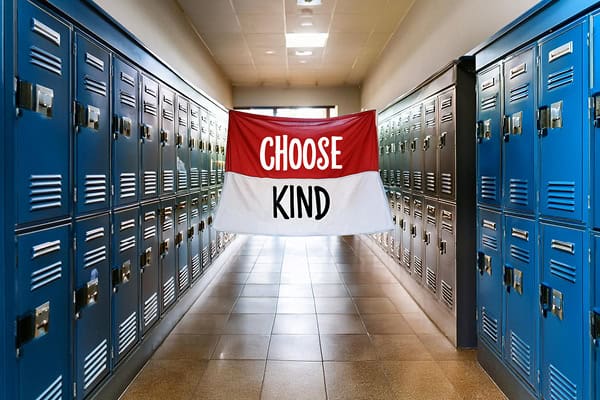Staff and students at Yates Elementary in Schenectady, N.Y., rarely end a conversation without uttering two words: “Choose Kind,” according to an article in Education Week.
The phrase, written on signs throughout the school and spoken at the end of daily loudspeaker announcements, has become a motto for staff and students after nearly a decade of implementing social-emotional learning, which teaches students how to manage their emotions, cultivate healthy relationships, and foster empathy.
Schools like Yates have increasingly turned to social-emotional learning as a strategy to address bad behavior, improve student well-being, and create a safer, more positive environment. But although it’s a promising strategy, its effectiveness varies based on how—and how well—it’s implemented. Schools should ensure SEL is systemic and not limited to an isolated period of explicit instruction, customized to the community, and integrated into every aspect of instruction, says Tyrone Martinez Black, a practice integration specialist at CASEL, a nonprofit that helps schools implement social-emotional learning and advocates for policies and funding to expand SEL adoption.
In schools with effective, systemic social-emotional learning, the impact on school climate should be clear with noticeable drops in misbehavior, reduced stress levels and improved emotional regulation among staff, and students who are kinder and more compassionate.
Yates students participate in daily circles in each classroom where they discuss their feelings; practice skills that help with learning, such as listening and following directions; and work on stress-relieving techniques through breathing exercises and meditation. The school also has a monthly assembly where students practice calming strategies, learn how to express their feelings, and reduce stress.
Staff members model those tools themselves, using them to help students manage stressful moments, such as tricky math problems or playground scuffles.
Students now are more apt to handle behavior situations on their own during lunch and recess using a common language and calm-down strategies.
“Social-emotional learning is foundational to a learning environment because it is a process that helps humans continually develop essential skills for both learning and life,” says Andrea Lovanhill, the CEO of Committee for Children. “That includes communicating effectively, building confidence, connecting with others, problem-solving, and making important decisions. All of those things really show up in a lot of different areas in education and [in] having an effective education practice.”
Without using a systemic approach to SEL, schools could be investing a lot of time and effort into a curriculum or strategy without seeing it make a real impact on the school environment.
When SEL is systemic, students and adults in a school practice social-emotional skills, applying them throughout the day in a variety of situations so they become second nature, Martinez Black says.
“It is critically important that any social-emotional-learning decisions that a school might make are really informed by local priorities and concerns,” Martinez Black says. “That means really working with families and caregivers and the community representatives.”
Having a systemic, localized approach has also been central to the social-emotional programming at the Lake Washington school district outside of Seattle. The district created its social-emotional-learning program by first developing a school board policy to set standards and hold the district accountable for providing effective SEL.
The policy came out of a statewide focus on expanding social-emotional learning in Washington state schools.
The Lake Washington district—in which 39% of students are Asian, 38% are white, 11% are Hispanic, 9% are of two or more races, and 2% are Black—had conversations with parents, staff, and community members about the social-emotional skills they wanted students to have. District leaders then worked with staff to develop content that embedded those skills into other areas of learning, such as reading, math, and science. For example, a history teacher may give students the opportunity to share their emotional reactions to lessons on historical events, or a math teacher might encourage a student to take a moment and practice calming techniques during a particularly challenging problem.
Having buy-in from the adults is key to successful SEL, says Lovanhill of the Committee for Children.
“Adults are the key influence on kids’ experience, as much as we might emphasize peers and relationships,” she says. “Having high-quality professional development for educators, ensuring that educators are supported in finding those daily moments of learning throughout the day, [supporting] a high-quality environment for kids to learn in, and [ensuring] that there are really effective communication strategies between parents and educators—all of that comes to bear on the perception of school.”
Education Week





